Postnatal Exercises - Exercises after delivery

- After delivery, the female needs to exercise in order to strengthen the pelvic muscle which is affected during pregnancy and delivery.
- These muscles are beneath the buttocks and they support the bladder, uterus and bowel effectively. The exit of all these parts pass through these muscles and you can feel them if you hold the passage of gases or urine.
What you will benefit from these exercises?:
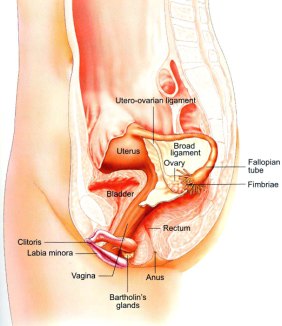
- Better control of urination.
- Less frequent voiding.
- Better bowel movement.
- During pregnancy, support your baby’s weight and allow its delivery, when the time comes.
How to do these exercises?
- Sit forward with your elbows over your knees, exhale your breath, then:
- Hold your vagina inward.
- Hold your anus as if you are holding gases from passage through it.
- Also hold your urethral sphincter as if you are holding urine from releasing.
- Be aware that you are breathing normally and keep holding for 1-3 seconds, then relax slowly.
- Make sure that while you are contracting your muscles, continue to breathe, consciously. Do not pull your abdomen inward and do not hold your legs tightly, or your buttocks.
- Start doing these exercises while you are sitting, then do them while you are standing or lying down.
Controlling defecation:
- While you are sitting on the toilet, use your muscles in the following way:
- Hold your urine for one minute even if you have a strong desire to void.
- Hold your urine even after coughing. Start doing this when your bladder is empty. Then do it when your bladder is full.
- Do this 50-100 times/day.
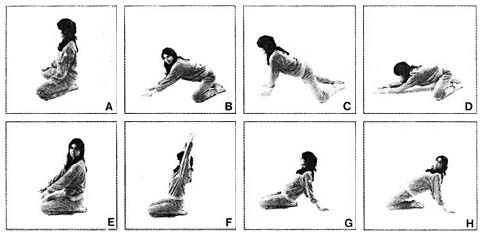
- When you do these exercises you may feel mild pain in the knees and ankles.
- This pressure will extend into the thighs and pull on the pelvic bone, and its organs, which helps the uterus to return back to its normal size, gradually.
- Doing the exercises will improve blood circulation and also helps in your recovery.
- Keep your back straight from the coccyx (base of the spine), to the head.
- Sit on the edge of a pillow to prevent slippage.
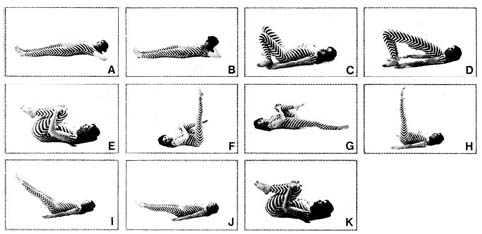
- These exercises give elasticity to the buttocks, trunk, thighs and pelvic organs.
- They will also strengthen the lower back and help in contracting your abdominal muscles. This will help you keep a good looking figure.
- Start the exercises on one leg then switch to the other one.
- If you delivered by caesarean section, you should consult your doctor before exercising. If approved, start off gradually.
- You may feel cramping pains in the buttocks, thighs and abdominal muscles, in the beginning.
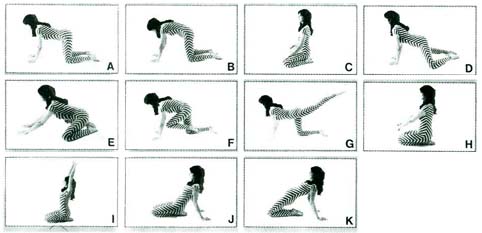
- These exercises give strength to the lower back and help keep the elasticity of your hip joints.
- They may also relax your chest and shoulder muscles.
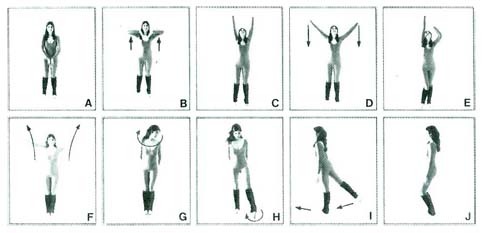
- The objective of these exercises is to improve fitness and energy.
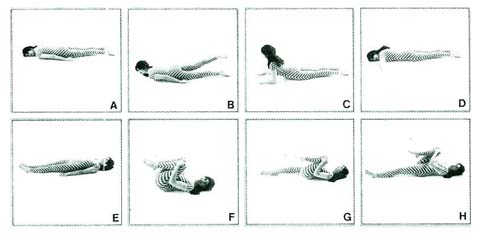
- The exercises will improve your blood circulation, muscle fitness and joint elasticity.
- After delivery, the pelvic area and the back will return to their normal pre-pregnancy position and these exercises will help.
- You can also experience improved general body condition, becoming more flexible and firm, especially in the abdominal area and the lower back.
- Do not bend your shoulders.
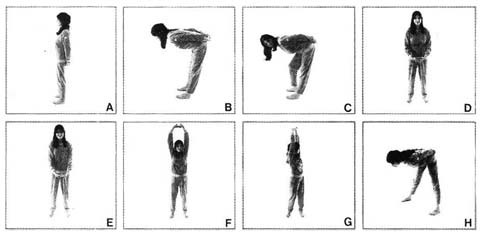
- These exercises help you in keeping the flexibility of the back and posterior thigh muscles.
- Improve the circulation in the lower part of the body.
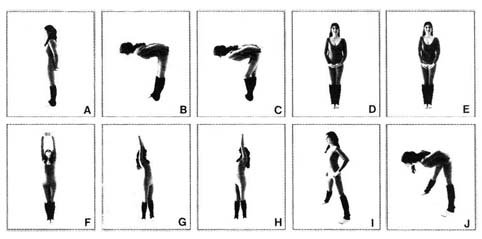
- These exercises give you energy and help reduce fatigue.
- You may feel tightness in the posterior thigh, chest and shoulder muscles.
- You may also feel more comfortable in the thigh muscles as they return to their toned and healthy shape.
- Improving your circulation will give you the energy to overcome fatigue.
- Helps you improve your breathing.
- Try to keep your back straight from the head to the lower back, and observe yourself in the mirror to correct.
Body exercises after delivery:
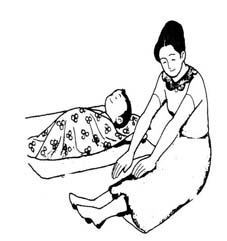
- Most women who have delivered normally, can ambulate a few hours after delivery, and by doing this, they will prevent the formation of varicose veins.
- Also, this will improve the uterine contraction pain, as the lower uterine part will be near the flank and its fundus will elevate, 4-5 days after delivery.
- Do not exercise in the first 2 weeks after delivery. But, you may walk, stretch your toes, elevate your head while you are lying down and after 2 weeks you can do the recommended exercises.
- These exercises help you to tighten your body muscles and return to your previous shape.
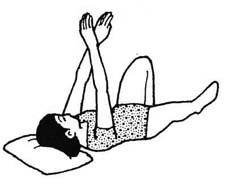
- At the beginning you need to pick up a few easy exercises and repeat them 6 times. Then, when you get used to it, you can increase them up to 12 times per day. If you feel tired, stop exercising.
Exercise (1):
- This exercise will improve your metabolism and blood circulation:
- Lie on your back, stretch your arms, put your hands over each other as a cross while you are exhaling air, then return them back while inhaling. This will decrease the tension in the belly area and improve circulation.
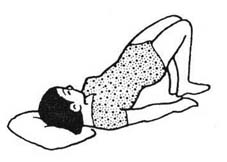
Exercise (2):
- Helps in the pelvic area recovery:
- Lie on your back, bend your knees while your feet touching the floor, let your arms relaxed on both sides, elevate your waist and count to six then return back to your previous position and relax.
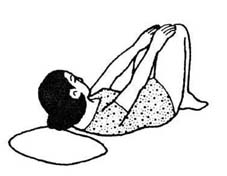
Exercise (3):
- Exercises for the belly area, for flexibility:
- Lie on your back and bend your knees while your feet are touching the floor. Elevate your head, trying to touch your knees, and then lie down again.
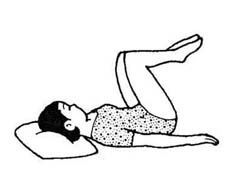
Exercise (4):
- Exercises for your belly:
- Lie on your back, elevate your legs and hold the leg of the bed firmly. Bend your knees slowly and elevate them while breathing out. Then, return to the previous position while inhaling and repeat it 4 times.
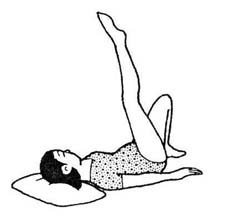
Exercise (5):
- Exercises for the belly and leg muscles:
- Lie on your back and elevate one leg in 90° angle, then change with the other limb and then elevate both limbs together.
Exercise (6):
- Exercise for the belly muscles and the back bone:
- Lie on your back, bend your knee and elevate it towards your chest. Hold it tightly with your hand, tighten your belly and thigh and push downward. Then return your leg slowly and repeat the same exercise with the other limb.
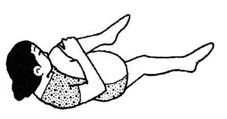
Exercise (7):
- Massaging your back muscles:
- Sit on the floor, stretch your arms backward and support your upper trunk. Bend your knees while your feet touch the floor. Then drop your knees down one side, to the other, until you feel the effect of this massage. Repeat at least 10 times.
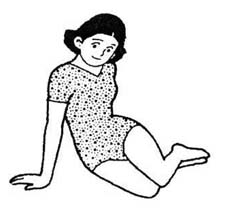
Exercise (8):
- Thigh and back exercise:
- Lie on your back, stretch your arms out from your body Elevate one leg perpendicular and bend it around your body in a way that allows the big toe to touch the floor during a breath out. Return your leg during an inhale. Change legs and repeat the exercise 4 times for each limb.
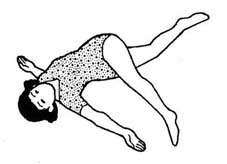
Exercise (9):
- Exercises to strengthen the back muscles:
- Stand on your hands and knees. Put one limb towards your chest during inhalation, then extend it backward during expiration. Repeat this 4 times and change legs.
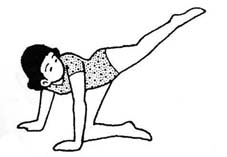
Exercise (10):
- Exercises to prevent varicose veins:
- Lie on your back, elevate one limb upward in a perpendicular angle and hold it with your hands. Swing it forward and backward and at the same time do circular movement with your big toe. Repeat it 10 times and change legs.
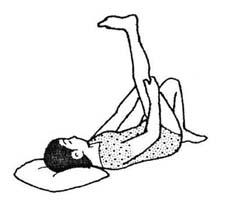
Exercise (11):
- Exercises for the leg and belly muscles:
- Lie on your back as if you are riding a bicycle, your hands behind your head and do 4 circular movements with your legs as you exhale, then repeat 4 more as you breathe in. Repeat this exercise until you feel tired.
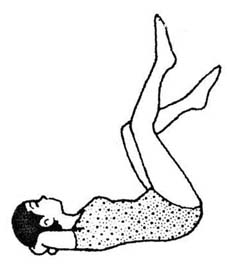
Exercise (12):
- Lie on your back, put your left leg over the right one forming an (X). Then put your left foot over the right knee. Then bend and elevate your body slowly. Change your limbs and repeat the exercise 4 times on each side.
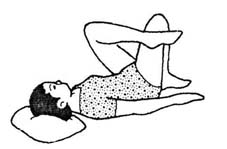
Exercise (13):
- Exercise for a thinner waist:
- Lie on your back, bend your knees and stretch each foot in the direction of your waist then drop down slowly. Do not elevate your shoulders while you are dropping your ankles. Rest for a while and repeat the movement 10 times.
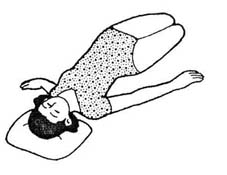
Exercise (14):
- Exercises for the waist:
- Stand placing feet shoulder width apart. Put your left hand on your left side waist, elevate your right hand and move it above your head while you are bending your waist to the left, repeat this 4 times and change arms.
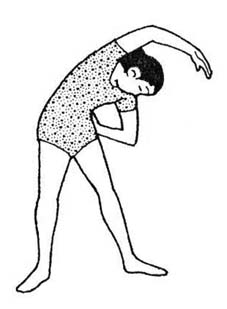
Exercise (15):
- Exercises to return your activity:
- Stand up, holding your legs side by side. Elevate your arms forward during inhalation and bend your back and knees slightly. Swing your arms backward during expiration and return to your previous position. Repeat this 6-7 times.
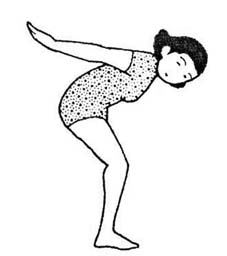
Exercises to strengthen the belly muscles for new mums:
These exercises help you to strengthen your belly muscle after delivery. It is better to do this 3 times a week on a carpet.
1 - a. Lie on the floor; bend your knees while putting your feet on the floor, and separating your buttocks apart and parallel to each other.
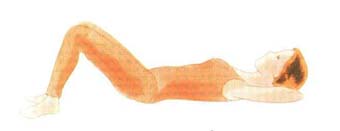
b. Exhale and pull your belly inward. Push your upper back downward to the floor while you are elevating your buttocks slightly. Take a deep breath and relax.

2 - a. Lie on the floor, bend your knees towards your chest, knees about shoulder width apart. Elevate your arms between your knees.
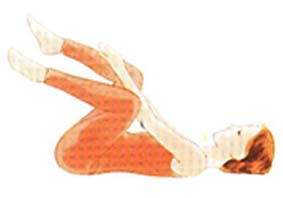
b. Elevate your head and shoulders off the floor, keep them in this position for 3 seconds, then relax. Repeat the exercise starting with 10 times/day then increase the number up to 20 times per day.
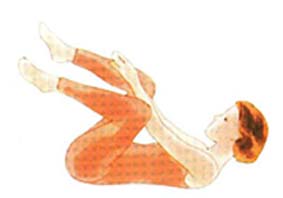
3 - a. Lie on the floor, pull your belly inward, and elevate your knees while bending them towards your chest and elevate your arms beside you slightly.
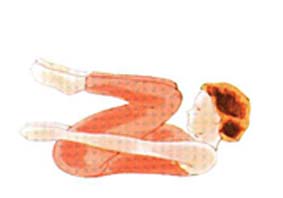
b. With your chin over your chest, elevate your shoulders and head away from the floor and pull your head toward your knees. Then return back to your previous position and repeat again. Start with 10 times and increase the number of repetitions from there.
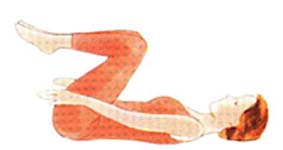
4 - a. Squat on the floor; elevate your arms over your head.
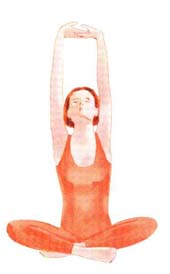
b. Pull your belly inward; bend forward while keeping your buttock on the floor, till your head reaches the floor. Breathe normally and keep this position for a count of 20.
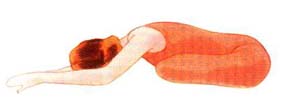
Consult your doctor before doing any of these exercises, or, if you have a problem, or complications from doing these exercises.
Baby Names Book, Arabic Baby Names
http://www.babynamesbook.net/
Dr Najeeb Layyous F.R.C.O.G
Consultant Obstetrician, Gynecologist and Infertility Specialist







 Pregnancy Due Date Calculator
Pregnancy Due Date Calculator
 Chinese Gender Predictor
Chinese Gender Predictor
 Ovulation Calculator
Ovulation Calculator
 IVF Due Date Calculator
IVF Due Date Calculator
